Last week Ross Gittins wrote in the Sydney Morning Herald that
the decades long drift from public to private schools has ended.
Figures released by the Bureau of Statistics last month show that 65 per cent of our 3.8 million students went to public schools in 2016, the same proportion as in 2013. If anything, the public-school share is creeping up.
A big call, coming from the latest ABS statistics which were released in February. Given I used similar data twelve months ago to suggest this was really only about primary schools, I thought I would have a look at this year’s statistics.
Looking under the hood at the recent statistics, the government share of the primary system does genuinely seem to be improving. And although the government share of the high school system continues to decline, there is a small possibility of a turnaround, at least in NSW, in that the government system loss of pupils in the transition from primary school to high school has stabilised.
So this year, what has changed since last year?
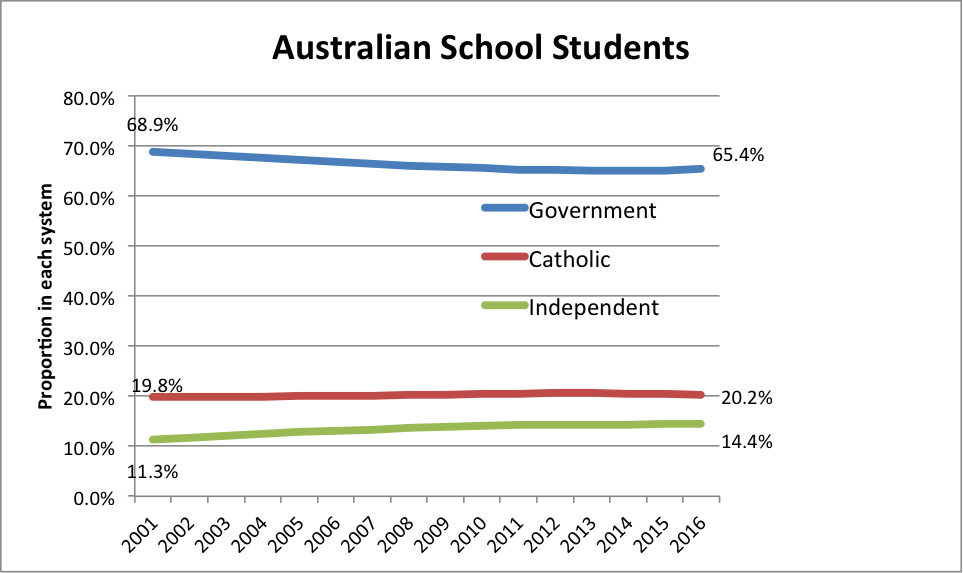 First, the overall proportion of children in government schools in Australia has gone up from 65.1% to 65.4%. That’s a real uptick since last year, with independent schools staying steady, and catholic schools falling.
First, the overall proportion of children in government schools in Australia has gone up from 65.1% to 65.4%. That’s a real uptick since last year, with independent schools staying steady, and catholic schools falling.
Last year, the main thing was happening was that primary schools were growing, and a much greater proportion of Australian students go to government schools in primary schools than in high school. This year it’s a little more complex.
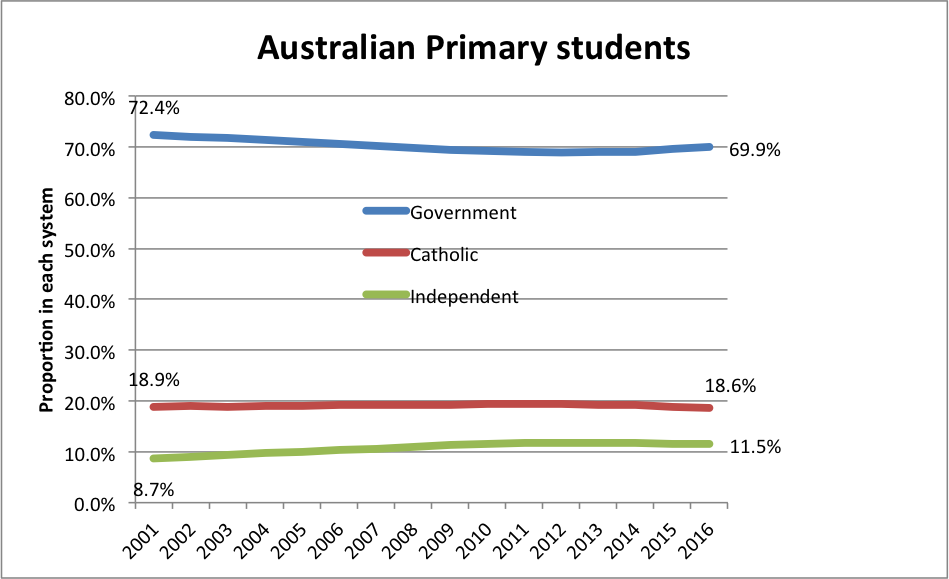
Let’s have a look at the primary and secondary systems separately. First, primary schools.
The proportion of primary school students at government schools also increased this year, with an increase from 69.5% to 69.9%. Most of this increase, again, came from the catholic school system.
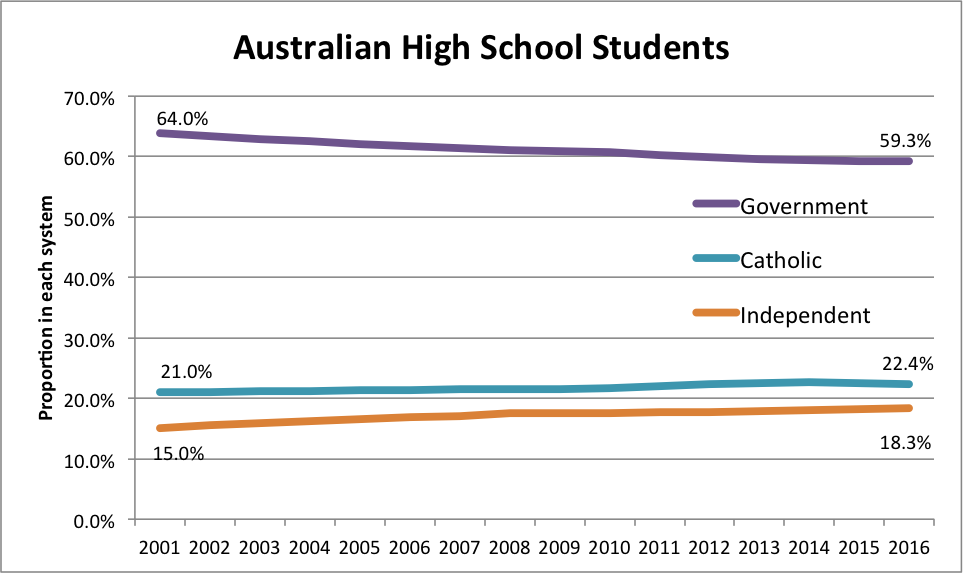
Second, lets look at high schools. The proportion of high school students at government schools in 2016 increased slightly from 59.2% to 59.3%.
So the major reason that government schools increased their share of all Australian students was primary schools. Mostly because they took students away from the catholic system. But also because there are more primary students in total than last year.
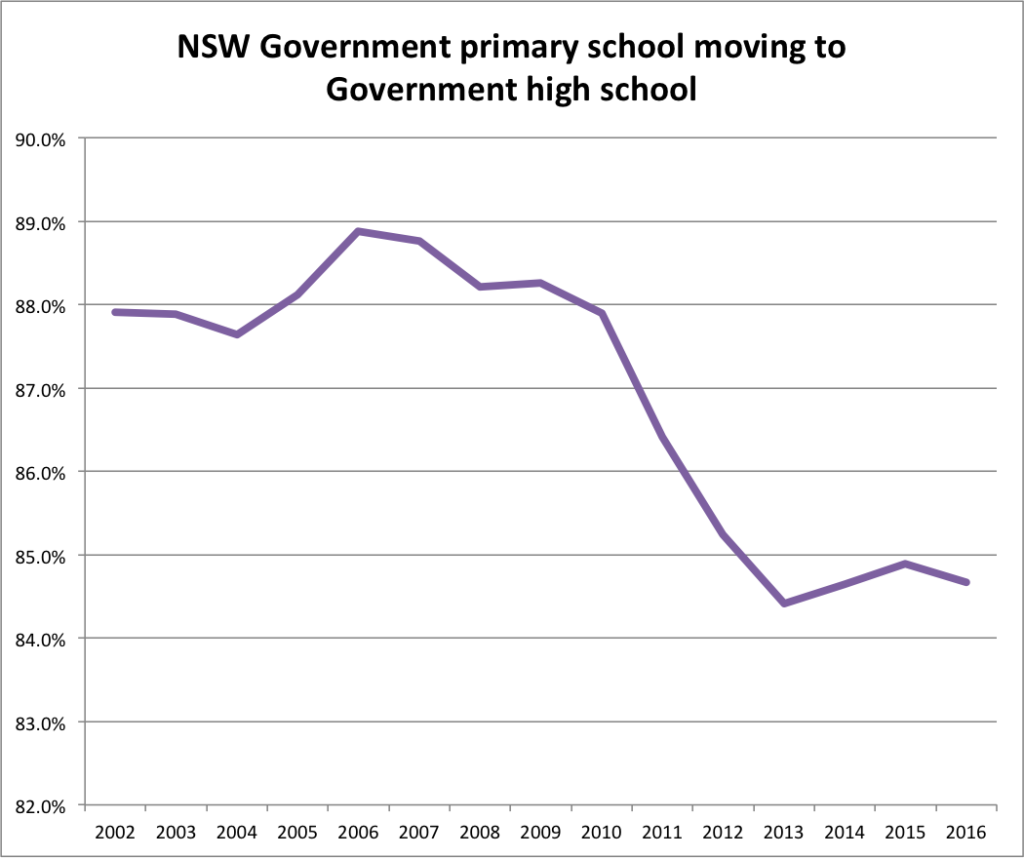
So the other interesting question is about what happens between primary school and high school. The Australian school system has different definitions of primary school and high school between states (and those have also changed over the last 15 years). So I have only analysed NSW for this one. In NSW, the proportion of government primary school students who go on to government high schools is still around the 85% mark. Slightly lower in 2016 than in 2015, but a fair bit lower than it was around the Global Financial Crisis. Of those 9,000 or students who leave the government system, around 4,500 go to the catholic system and 3,500 go to the independent system. That still isn’t a great vote of confidence in the government system.
What’s my conclusion? Ross Gittins is fairly optimistic that parents are starting to realise that private schools aren’t a particularly good value investment (if what you want from them is academic results).
But there’s one last possible contributor to the end of the trend to private schools: maybe parents are realising that paying all those fees doesn’t buy your kid superior academic results along with their old school tie.
My view is that the drift to private schools has slowed but not stopped. Independent high schools, in particular, have a reasonably large share of the market for high school education, and looking at the choices students make going into high school, that doesn’t look like ending any time soon.
_________________________________________________________________________________________________________________
Disclosure: I attended government schools for my entire school career, as do my two sons, who currently attend our local comprehensive government high school.
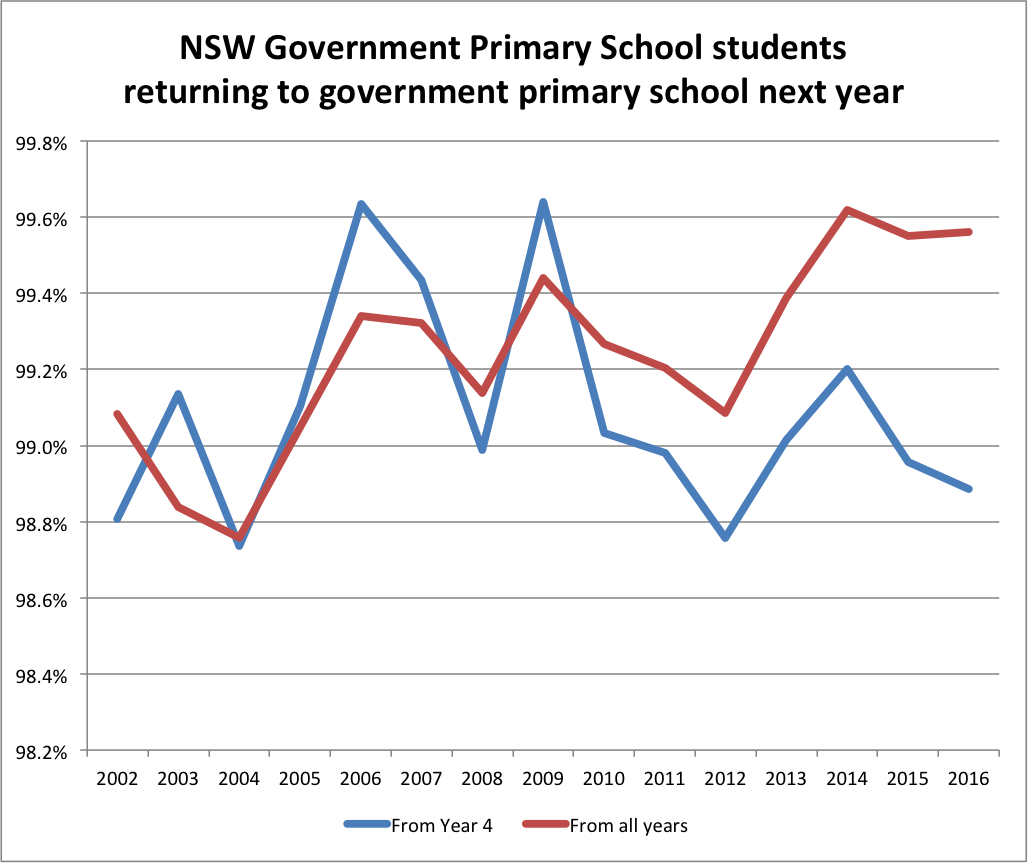
The drift out of government primary schools has slowed but not stopped.
